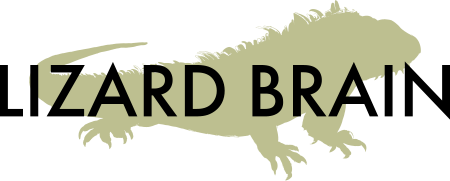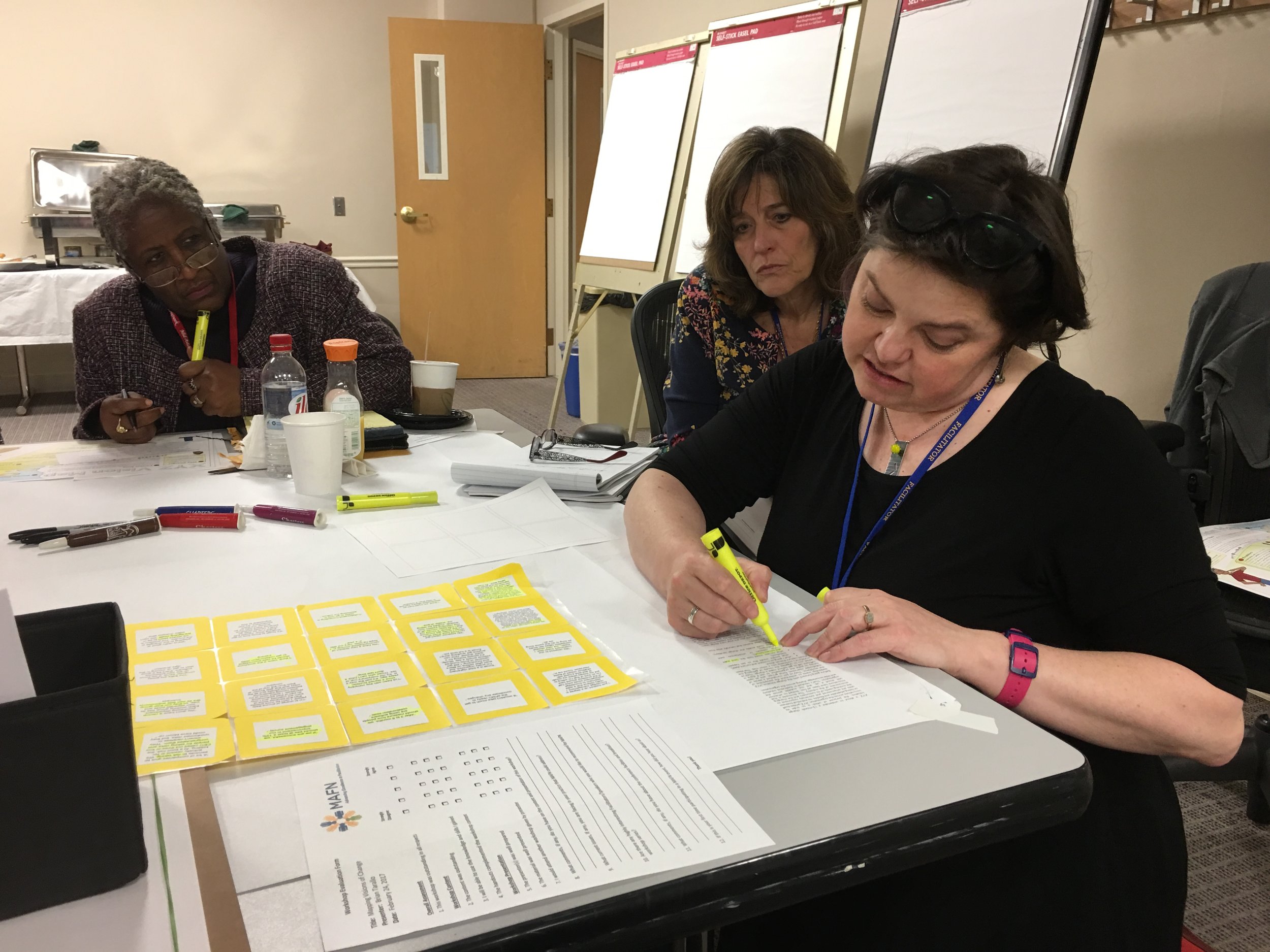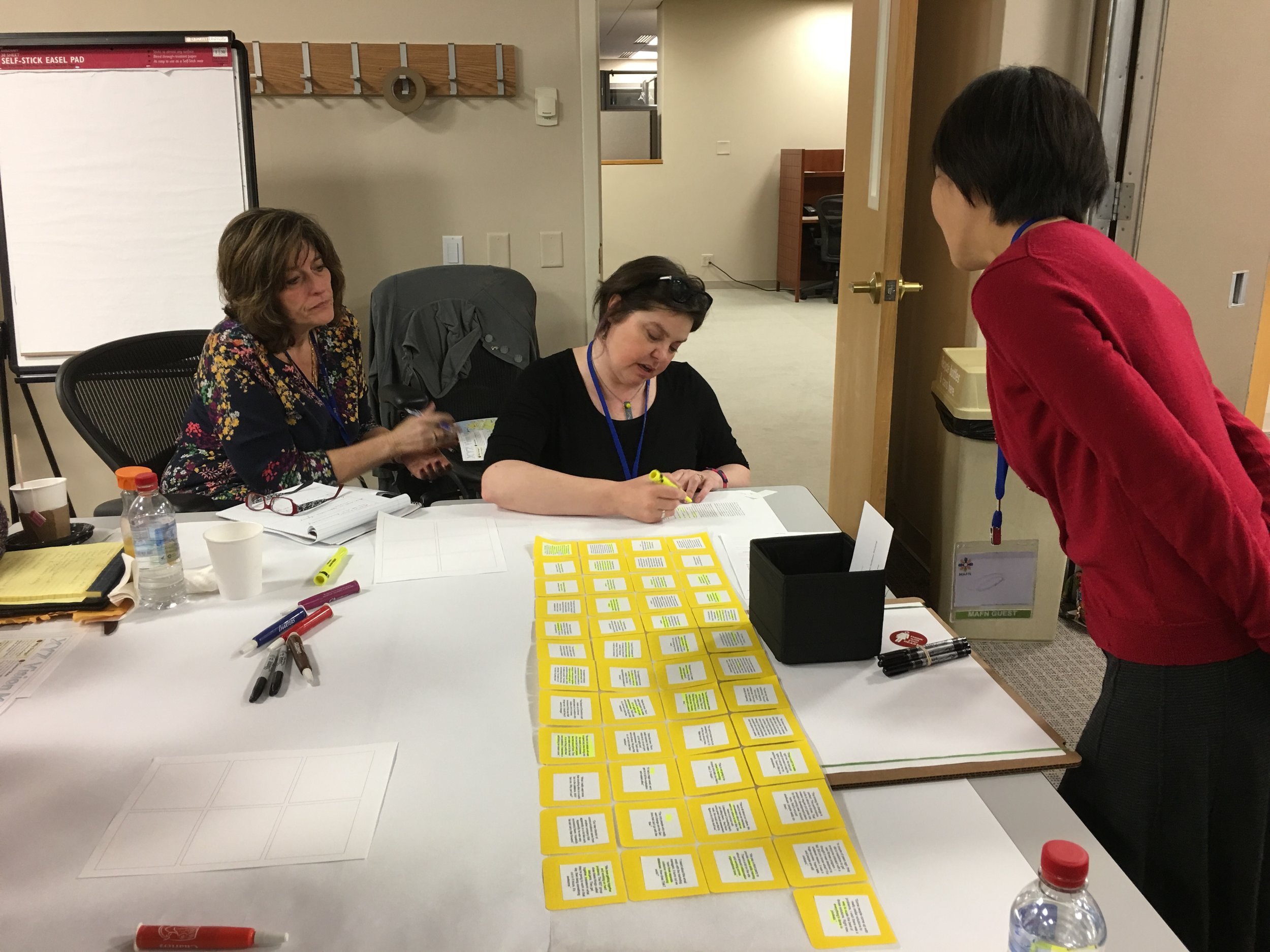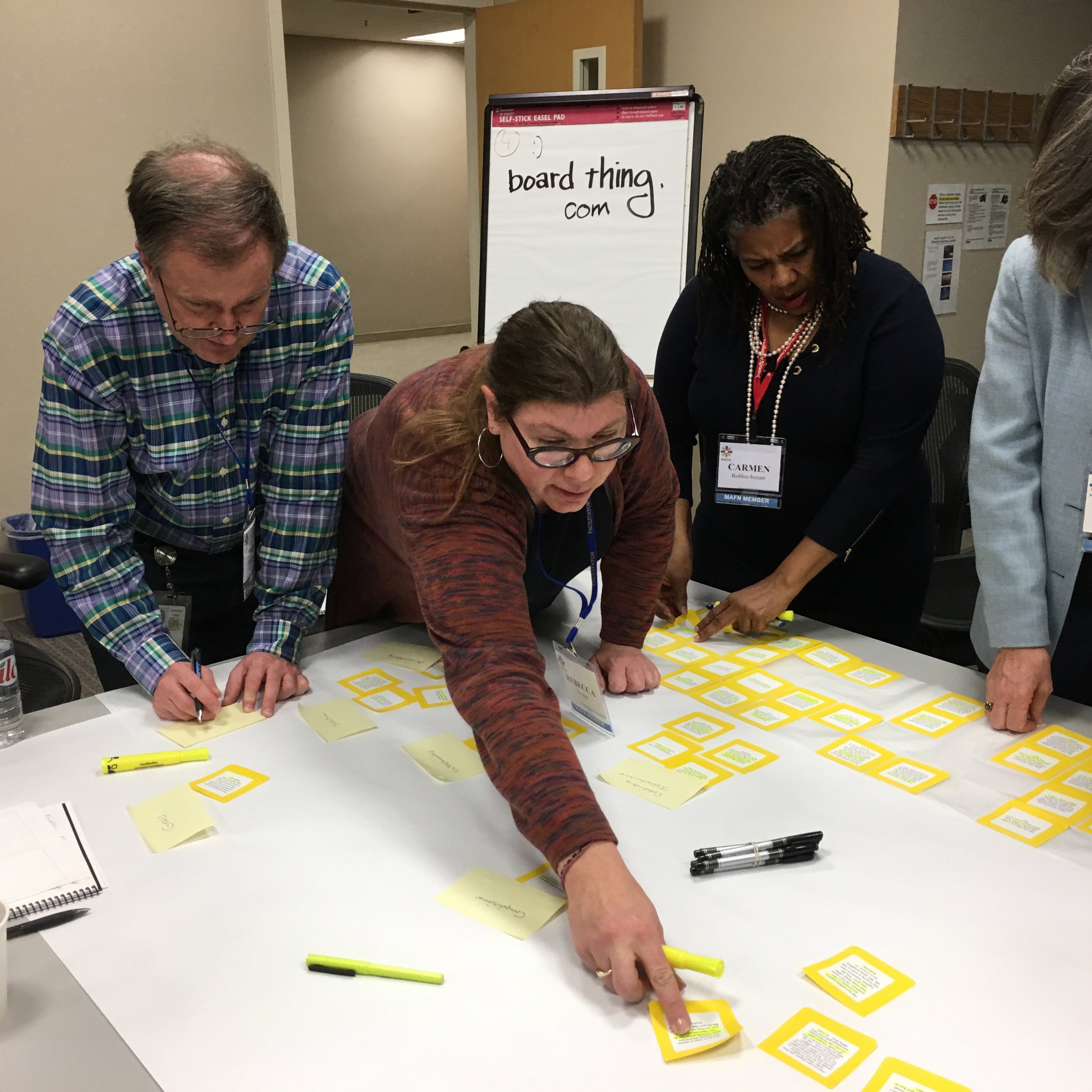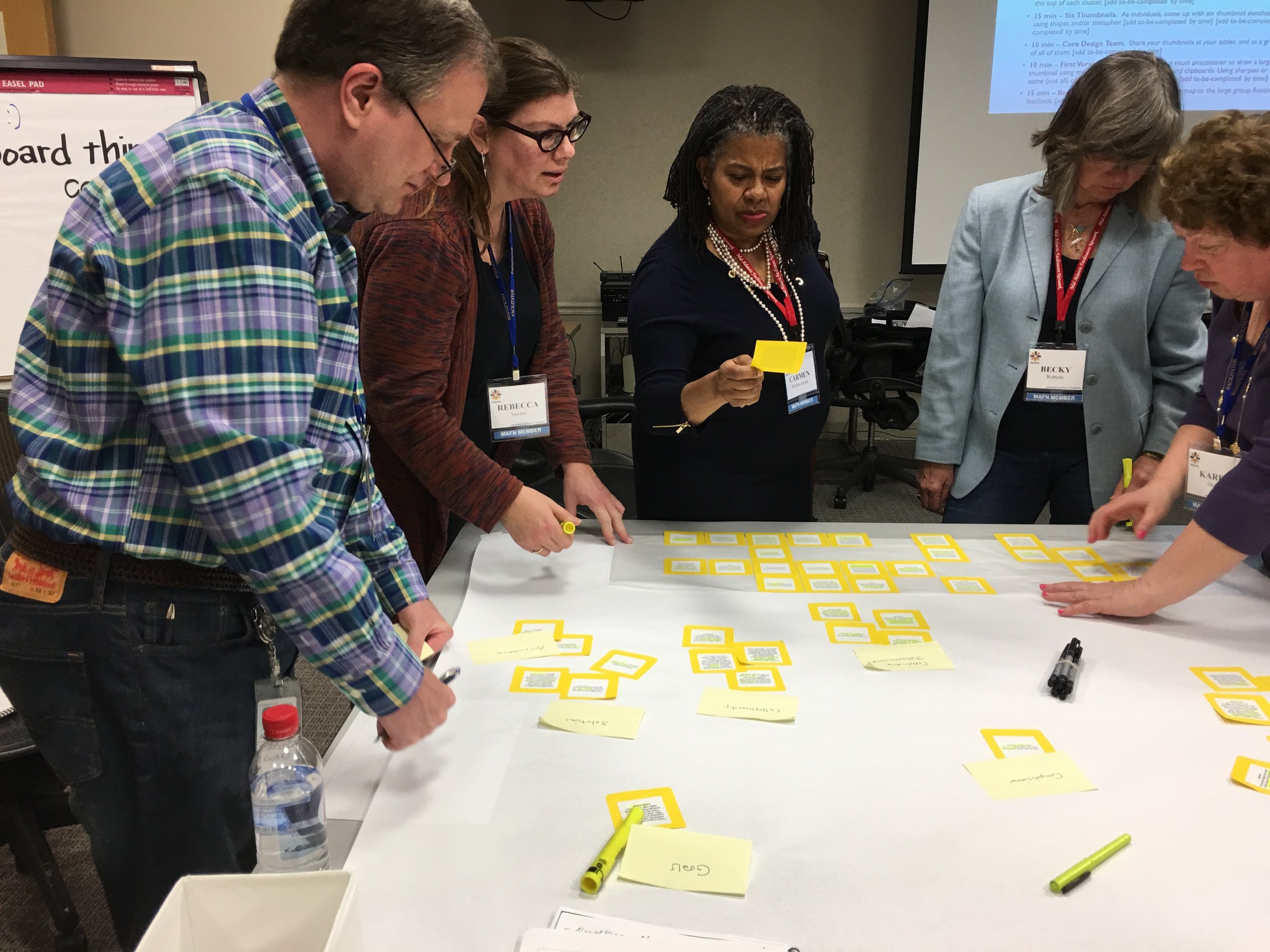Identifying Themes
“The most beautiful order is a heap of sweepings piled up at random.” - Heraclitus
Human beings are good at seeing things that aren't really there. This is helpful when a job requires finding connections and patterns. Once you've gathered a critical mass of content and data for a vision map, it's time to put the participants' ability to find those connections to work. Here's how to set it up.
Lay out all of the content you've gathered on large tables. Arm your participants with sticky notes, sharpies, highlighters, and scissors. Share these instructions:
"If you had to clean your garage, you might start by dumping everything out on the driveway and figuring out what goes together. You'd probably start by deciding what you want to keep and what you want to get rid of. Then, you COULD organize all your stuff by use. For example, all your sports equipment goes together, your gardening stuff goes together, your tools go together, and so on. Or, you might organize your stuff by shape. All your long handled stuff goes together, so you'd put rakes and baseball bats and brooms together, and all the stuff in boxes stacked neatly. HOW you organize it doesn't really matter, so long as it makes sense to the most number of people who have to find things. We're going to recreate that process here.
"First, start by scanning all the content we've gathered. If something strikes you as worth keeping, highlight it. Now, 'worth keeping' is subjective and means different things to different people. Rather than come to one definition of what 'worth keeping' means, we're going to leverage the diversity of perspectives in the room and say that if it's worth keeping for one person, it's worth keeping for the group. That way, we'll start to see all sides of the beachball.
"After a while, you'll start to see themes emerge. Themes are the big categories of information that our content falls into. If you think you see a theme across the content, move those pieces of content together, and write down the name of the theme on a sticky notes near the cluster of content. Talk with your colleagues about this. Have a discussion. Validate your proposal for a theme with others. And remember: what matters most is that the themes make sense to the most people. Keep the Paris Principle in mind."
The Mid-Atlantic Facilitators' Network practices Identifying Themes.
